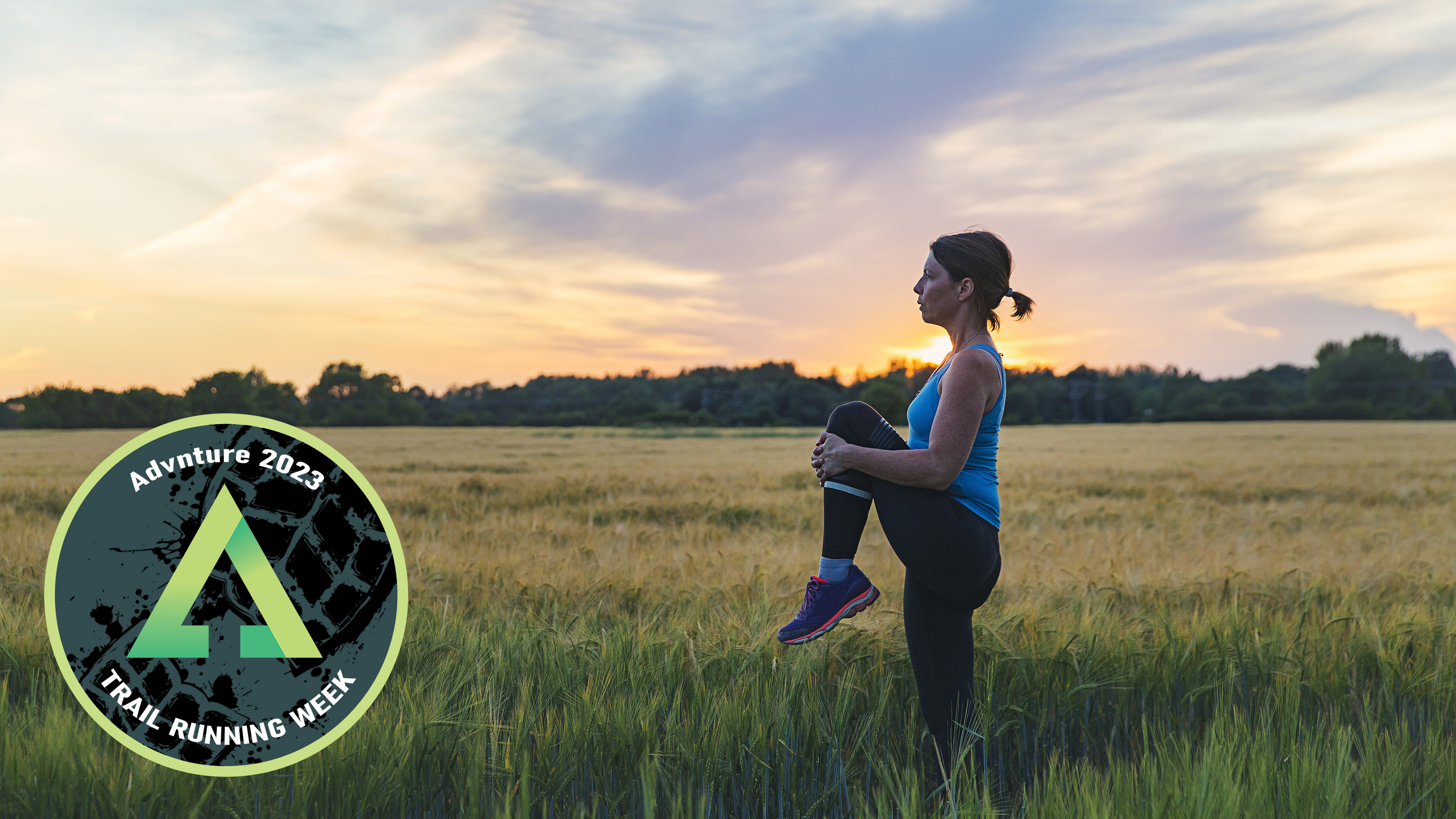How to create a trail running training plan: expert tips for success
How to stay focused and motivated while also enjoying the build up to a trail running race or challenge

Many runners like to have a goal of a race to focus on. Knowing that there is a race on the horizon, whether it is a road or trail event, helps with the motivation to train. Another important ingredient for success, especially if you are stepping up to a longer distance race or you want to run a faster time, is to follow a running training plan.
Having a plan that you can follow every week allows for a sensible build up to a race. It could be you have decided to train for your first 5k trail race, or you are hoping to complete a 10k, half-marathon or marathon trail event, or perhaps you are looking towards your first ultra running race. Whatever the distance, a trail running training plan will be a useful asset.
There are plenty of different places to source a running training plan online. You can use the same training plan as you would for a road running race. If you are entering a race, the organisers might also have a selection of training plans on the website for runners who are starting from different fitness levels. You can also ask a running coach to supply you with a trail running training plan to suit your ability and aspirations.

Our advice for training for a trail running race or challenge draws on personal experience and expert advice from professionals.
Be SMART
You need to be realistic about your running ability – and your goals – for a trail running race. The acronym SMART stands for Specific, Measurable, Achievable, Realistic and Time limited.
If you follow the SMART goal, you will be able to choose a training plan to suit your fitness levels. For example, if you can already run a comfortable 10k on trails, it is achievable and realistic to expect that you can build up to a half-marathon distance in 10 to 12 weeks.
If you have run a 10k in an hour, it is SMART thinking to set a goal of running a 10k in 55 minutes with a build up in speed over 12 weeks.
All the latest inspiration, tips and guides to help you plan your next Advnture!
Likewise, a 20k trail race should be achievable for runners who usually run 10k three times a week and want to simply finish the event. A SMART training plan would build up distance and stamina over 12 weeks.
An example of a goal that is not SMART is to hope to run a trail marathon in 3 hours 30 minutes in 10 weeks’ time if you are currently running only a 10k distance once a week.
If you are in doubt about what is SMART, it’s a good idea to ask an experienced running coach.
Warm up, cool down
It is a good idea to include warm up exercises for running as well as a good quality cool down stretches in every running session. This will aid recovery and help to prevent any potential injuries.
Don’t worry about pace
If you simply want to complete a longer distance trail running race, you need to be running longer distances in training. A good training plan will help you to build up your stamina and endurance for these longer distances over many weeks.
Don’t worry about your pace during this build up. You simply want to be on your feet and running more miles or for a greater duration. You need to feel comfortable with running further and not fixated on pace.
To race faster, you need to train faster
This might seem like an obvious statement, but you need to allow your body and muscles to adapt to running faster over set distances.
For runners who are hoping to achieve a faster time at a set distance, a training plan should include two to three shorter, faster weekly sessions. Alternatively, you can include faster intervals, such a 1km, during a longer run.
Shorter, harder sessions or sets of faster running will reap the rewards of faster race times if you follow a SMART build up.
Pick the right terrain
If your trail race is on hilly trails, you should include plenty of this type of terrain in your training plan. Likewise, if the race is on flatter, more undulating forest trails, then you need to train on this sort of surface.
You don’t need to train on the actual race course, but you should have some experience in training on the type of course that you hope to complete.
Arriving at a race without doing some training on similar terrain will mean it is much harder to finish.

More tips for a trail running training plan
Wear the right kit
The best trail running shoes, best trail running socks and other items, such as shorts, skort, tights, base layers, as well as a running hydration pack will ensure comfort and safety while following a trail running training plan.
Allow time to recover
Recovery is as important as run training. Make sure you take rest or easier days where the training plan suggests. When you are resting or doing an easier paced run, your muscles have the chance to repair, recover and grow stronger after harder sessions.
As we age, recovery is even more important because muscles and tendons take longer to recover after longer or harder running sessions.
Before you get to the start line of your race, make sure you have properly tapered. A good quality trail running training plan will always include a week or more, depending on the distance, of reduced running effort and sessions so that you get to the race in a fully recovered state and ready to run your best race.
Cross train
Running is a repetitive, forward motion exercise. This means you need to add in some kind of stretching and or flexibility sessions to your weekly plan. Keeping muscles and joints supple will help you to avoid potential niggles and injuries cause by tight muscles.
In addition, running on trails challenges the body in all sorts of ways and requires good stability, quick feet and balance. So it’s important to work on foot and ankle strength, as well as lateral stabilising muscles.
Doing a circuits class or a strength and conditioning session once or twice each week will help to improve muscle strength in general. It is important that these sessions include exercises to strengthen leg muscles, glutes and core. Jumping and bounding, especially when the exercise calls for you to land on one foot, are especially good for trail runners.
Run for fun
Although you are focusing on a race, you still want to enjoy your running. If something gets in the way of your training plan, such as work, family life or an engagement with friends, you can give yourself a break or do a run that suits your time frame.
However, if you miss more than a few days of training in one week, it’s a good idea to go back to the start of that week’s training and do it again.
When you run, think about why you enjoy your sport. Look around you at the scenery and remind yourself how lucky you are to be able to run in beautiful places. Relish the time away from your busy life and enjoy being on your own or running with friends in the countryside.
Another way to make trail running fun is to head off to new places to explore different routes.
By following these tips for a trail running training plan it is far more likely you will have a successful race or achieve your chosen challenge.
This article is part of Advnture's Trail Running Week 2023 (running from Monday 27 March to Sunday 2 April), our in-depth look at how to train smarter, choose the right gear, and have fun when things get muddy.

Fiona Russell is a widely published adventure journalist and blogger, better known as Fiona Outdoors. She is based in Scotland and is an all-round outdoors enthusiast with favorite activities including trail running, mountain walking, mountain biking, road cycling, triathlon and skiing (both downhill and backcountry). Aside from her own adventures, Fiona's biggest aim is to inspire others to enjoy getting outside and exploring, especially through her writing. She is also rarely seen without a running skort! Find out more at Fiona Outdoors.
